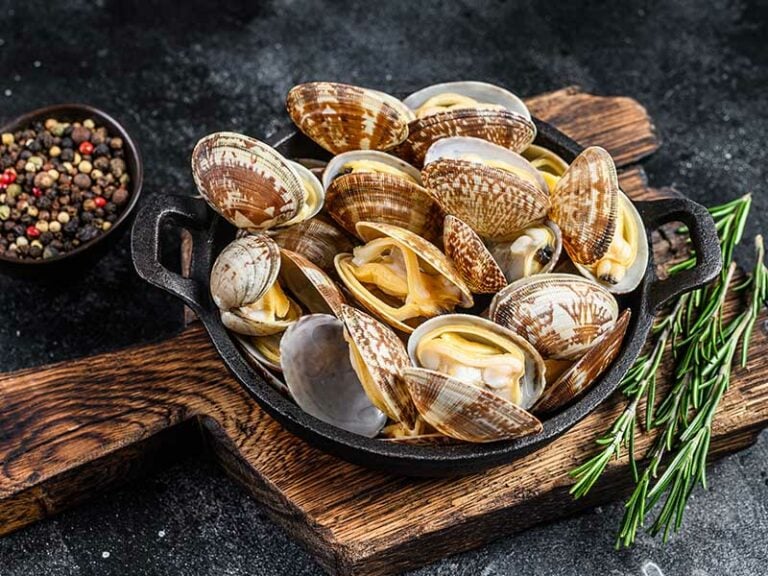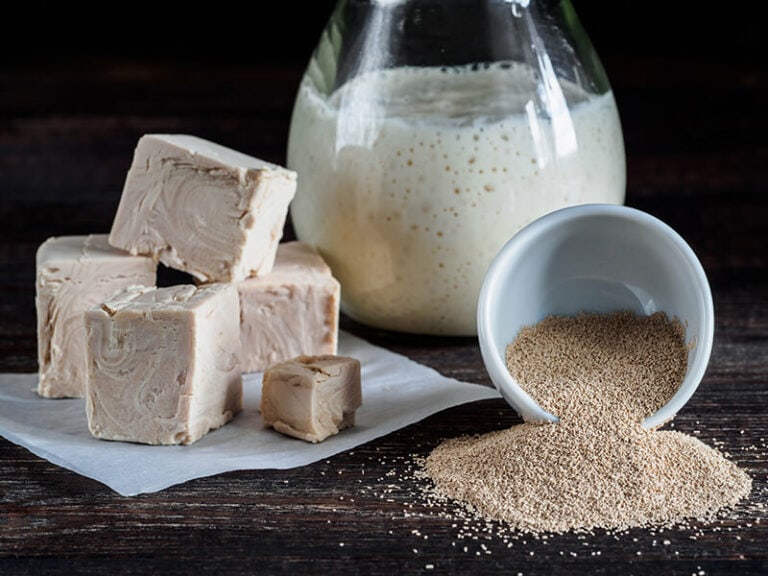What does tuna taste like? Tuna is one of the few fish that even people who haven’t tasted raw food can eat fresh. Cooked or uncooked, tuna’s juicy, meaty, and creamy texture will dwell in your memory for a long while.
You may like or dislike the taste of tuna, but its culinary value is undeniable. Tuna is a part of many famous recipes all around the world. A remarkable thing about tuna is that its flavors and texture vary according to the way you cook it.
Tuna is also a great source of protein and other vital nutrients. Keep reading to find out how this popular fish tastes and how people from different cultures enjoy it.

Everything You Need To Know About Tuna
Tuna is one of the most-eaten fish in the world. It is a saltwater fish that belongs to the tribe Thunini, which includes 5 genera and 15 species. From a culinary standpoint, the two most important types of tuna are bluefin tuna and albacore tuna. (1)
Compared to other popular types of fish, tuna is a relatively large fish. The largest of the tribe— the Northern bluefin tuna—has been recorded up to 14 feet (4.3 meters) and 1,800 pounds (800kg).
Many tuna species are scattered throughout the world’s oceans. Tuna swim in schools and migrate with other fish. Female fish can lay millions of eggs in mating seasons, but only a few of them make it to adulthood. The rest usually end up in other carnivorous fish’s stomachs.
Tuna is fully mature in the 4th or 5th year of its life, with the length reaching up to 13 – 14.5 inches (35 – 37 centimeters). The male fish is bigger than the female fish. Their lifespan is around 10 – 12 years in nature.
Skipjack tuna is the most eaten type of tuna due to its abundance in nature. 70% of the US canned tuna is skipjack tuna.
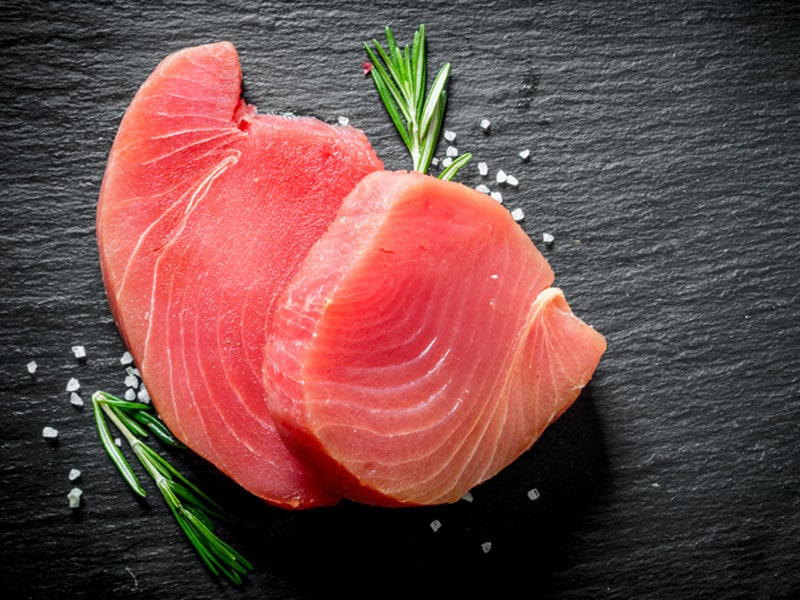
Nutritional Values Of Tuna
Tuna is a great source of vitamin B12, which is responsible for the creation of DNA and new blood cells. People usually relate to tuna as a rich source of omega-3 fatty acids, known for boosting brain and cardiac health.
Tuna provides lean meat, which is high in protein, but low in calories. Lean meat is extremely useful for weight loss since it makes you feel full longer.
The vitamin D source in tuna brings a lot of dietary benefits. Just 6 ounces (0.1 kilogram) of canned tuna can provide enough recommended vitamin D intake for a day. Tuna is also rich in minerals such as iron, iodine, potassium, and selenium. (2)
Learn about the health benefits of tuna to fit them into your diet more often.
The Supreme Taste Of Tuna
The taste of tuna varies greatly, depending on many factors such as types of tuna, parts of tuna, and the ways to process tuna. However, there are some general characteristics that all kinds of tuna have in common.
General Taste
Tuna meat is dense and lean, with a juicy, oily, and creamy texture that almost instantly melts in your mouth. Preserved tuna develops a noticeable fishiness, but with a little touch of cheese and mayonnaise, tuna will reclaim its iconic sweet and creamy flavor.
Fresh tuna has a sweet and saline flavor with a mild fish taste and smell. The saline taste will remind you of the ocean. If you find a strong flavor of fishiness lingering in your raw tuna, it’s a sign that it is not fresh and might not be safe to consume.

Canned Tuna
Some tuna dishes cost a fortune, but you can find its canned products very affordable. Canned tuna is widely consumed in the US thanks to its reasonable price and convenience.
Some brands of canned tuna cook the fish before canning it, while others cut up the frozen tuna and stuff them into cans. With the former kind, you can use it directly after opening the can, but the latter needs cooking to be able to eat.
I advise you not to apply any heat treatment with the already cooked tuna because recooking it will reduce the flavor and nutrition, but with the latter kind, cooking will not diminish the flavor at all.
Canned tuna usually comes with oil-brine or vegetable broth. Manufacturers usually preserve them with salt, so it has a briny taste. This type of tuna is tender, buttery, oily, and soft.
It can be a great ingredient for many dishes, such as sandwiches, pasta, salad, and casseroles.
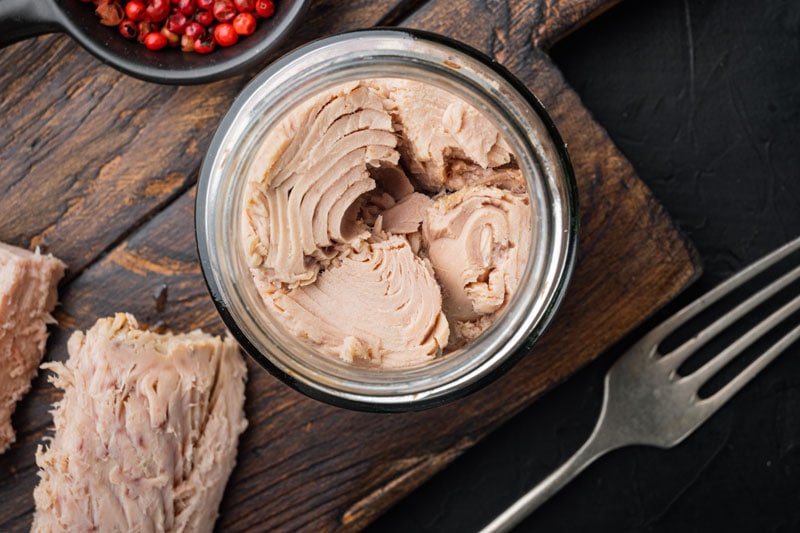
Seared Tuna
Searing food is a method of cooking using a sudden intense heat to burn the surface of the food for a short time. This method gives the fish a tempting texture with a contrast between the inside and outside.
Seared tuna looks like a steak. A little burnt on the outside and rare on the inside. The surface is a little crispy, while the inside retains the entire flavor of juicy and fresh tuna. It has a mild, oily, and slightly sweet taste.
Seared tuna usually goes with salad or steamed rice. But be careful! Overcooked seared tuna will ruin its flavor. Just equally sear all the sides of the tuna steak to keep the inside raw. If you can’t stand raw food, turn the heat down and cook till the inside turns rare.
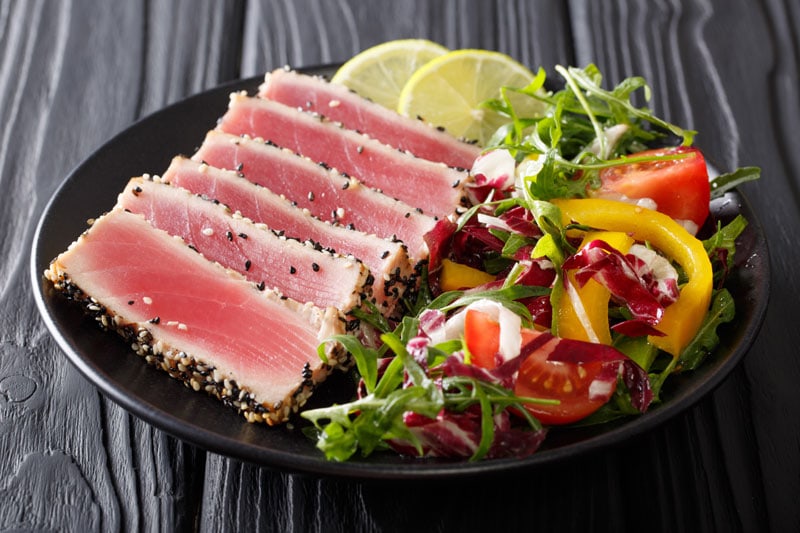
Raw Tuna
Nothing surpasses the taste of raw tuna if you are a fan of uncooked food. People use raw tuna in many recipes, some of which are famous worldwide.
Sashimi
Sashimi is a dish from Japan with the main ingredients consisting of raw fish and vinegared rice. The fish is sliced thin to the point of looking almost translucent and laid on top of the rice. Tuna sashimi has a surprisingly sweet and refreshing taste.
There is no fishy taste of raw fish as your prejudice may hold. The soy sauce and wasabi will diminish any tiny bit of fishy smell left. Give it a try if you are still in doubt. You will never regret it.
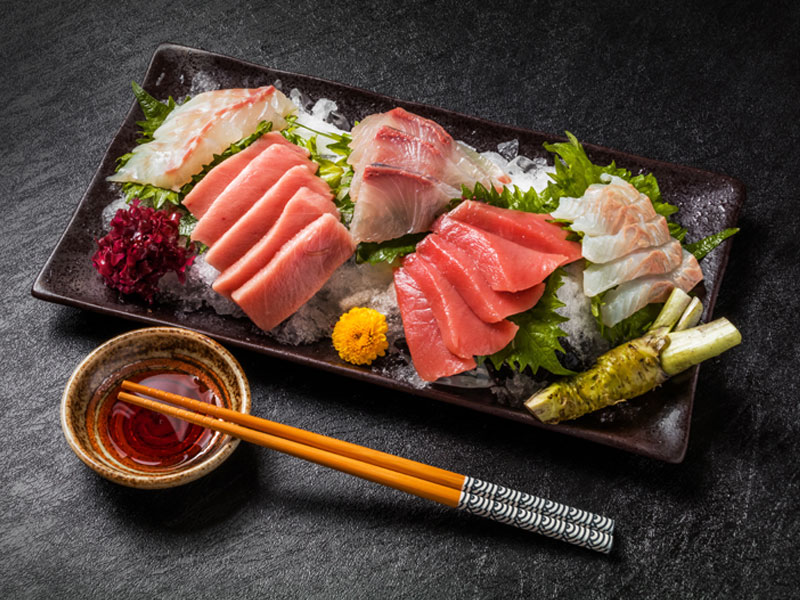
Tuna Poke
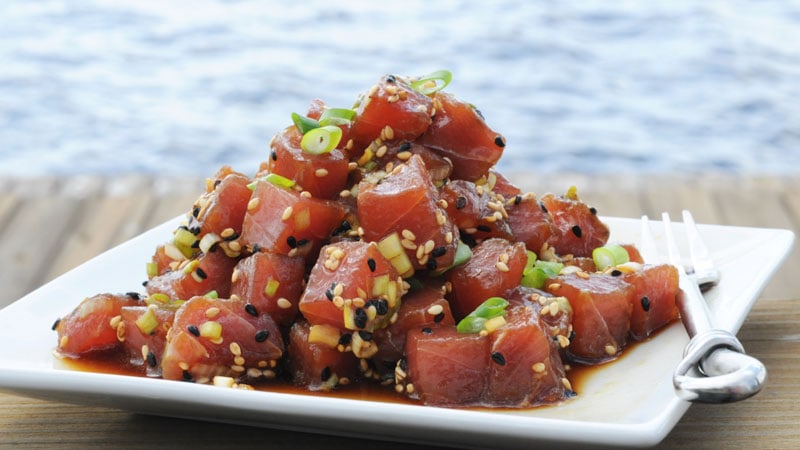
Tuna poke is a Hawaiian delicacy. In this recipe, people will dip sliced fresh tuna in soy sauce, sesame and rice wine vinegar, then top the tuna on sushi rice. You can eat this dish with many kinds of vegetables or fruits (cucumbers or avocados).
The tuna tastes so firm, juicy and sweet. The raw fish dipped in the sauce gives an umami flavor to every bite.
Learn how to make classic ahi tuna poke with some simple steps.
Tuna Tartare
Tuna tartare is a simple dish with cubes of raw tuna seasoned with soy sauce and herbs. Everything in this recipe is raw, from fish to avocados and green onions.
Tuna tartare is so delicious and fresh, boasting a rich buttery flavor that almost melts in your mouth. Whatever the recipes might be, raw tuna has an exquisite flavor that is refreshing and tender. It’s not too strong or pungent.
The buttery texture is the best part since you feel like every piece of raw tuna is breaking apart in your mouth and delivering a delicate sensation with every bite.
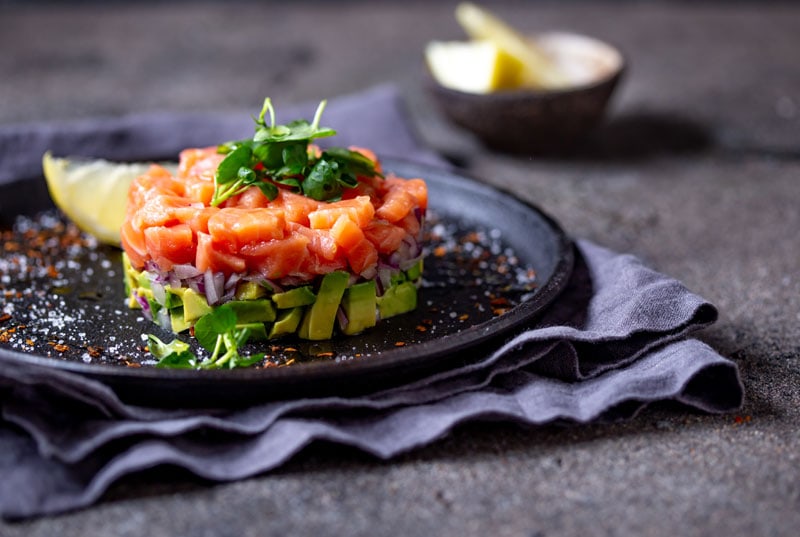
Unique Taste Of Different Kinds Of Tuna
As I have stated, tuna is not a single species but comes with a variety of fish. In this section, I will show you the most popular varieties in the market.
Learn more about tuna and how their meat looks in real life.
Yellowfin Tuna
Yellowfin tuna or ahi tuna comes with a bright red color and mild flavor. This fish is the most common type of tuna due to its price. Whether it is canned tuna, sushi, or steak, yellowfin tuna always comes at a reasonable price.
This tuna packs more leanness and less fat in its meat than bluefin tuna. Sushi chefs prefer choosing this kind of tuna for sushi for the same reason.
Yellowfin tuna becomes firm and juicy with a tender and meaty flavor when cooked. The process also changes the bright red color to gray.
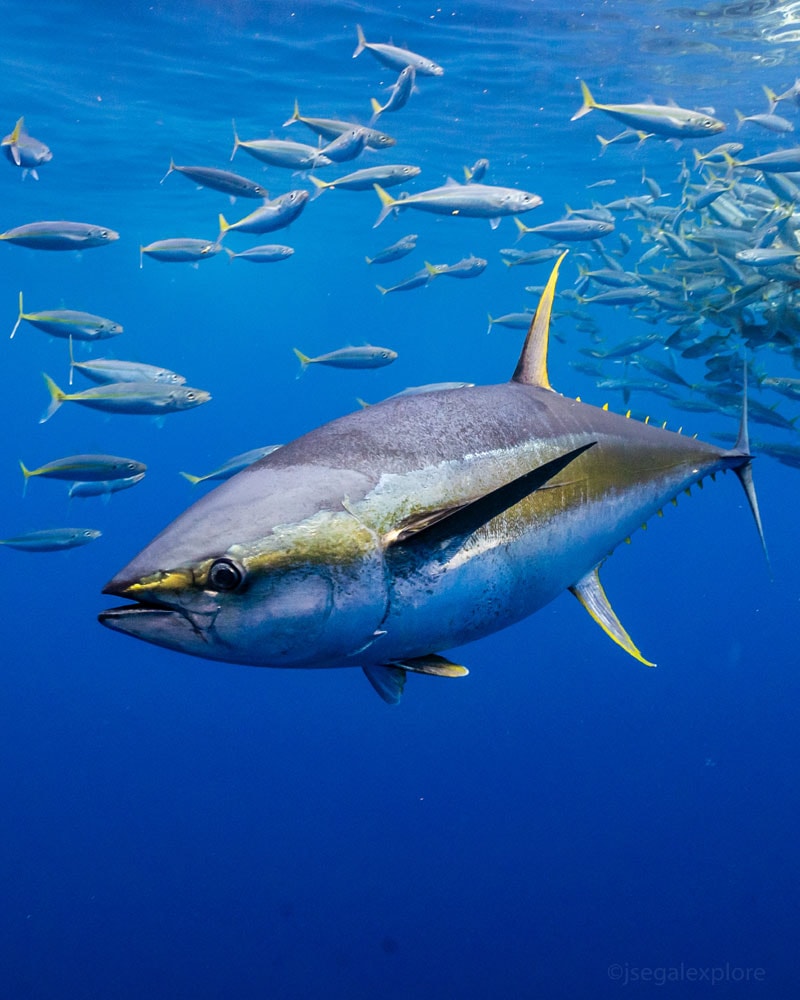
Bluefin Tuna
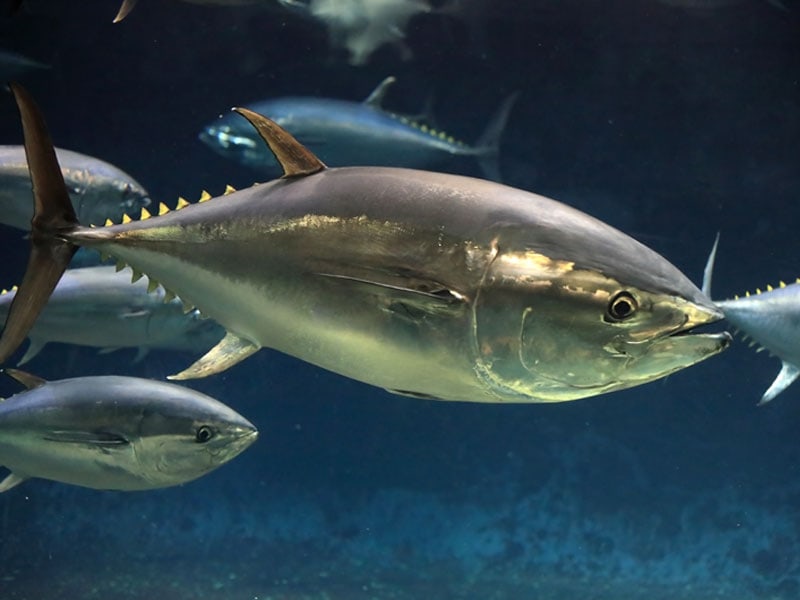
People regard bluefins as the king of the tuna family. Due to their exceptional natural physical capabilities, the texture and flavor of Bluefins are no match for other fishes.
Bluefin’s meat contains the most fat compared to other tuna species. The fish offers more delicate flavor and meatiness, with the fat melting in your mouth and leading to a juicy taste. Its savory aroma can awaken anyone’s appetite.
Get to know why bluefin tuna is so delicious in dishes and expensive in price.
Albacore Tuna
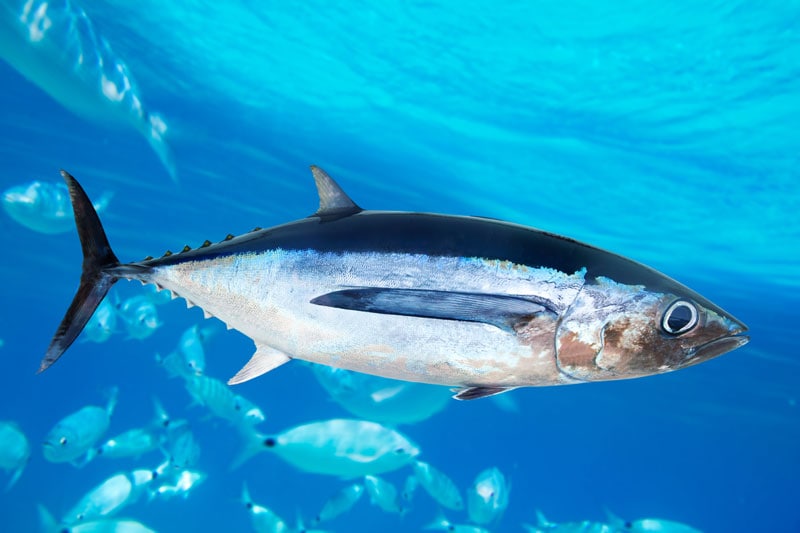
Albacore is the second most popular tuna in the US. If you want to try raw fish dishes but you’re still unsure about the fishy taste, Albacore tuna is your answer. They have thicker flesh and very low fat. They also have a very mild taste, maybe the mildest taste of all tuna.
This type of tuna is also the only one with white color. They’re abundant in supply, so you will have no trouble finding them in supermarkets or seafood stores. However, albacore tuna is high in mercury levels. Consuming it too much may lead to organ failure.
Learn about the mercury in tuna to eat tuna like a smart consumer.
Skipjack Tuna
This small-sized tuna offers the strongest taste of them all. Its meat is dark and tender. It is the most used tuna in canning due to its abundance in nature. 70% of the US canned tuna market is from skipjacks.
This type of tuna contains a low fat level. People usually refer to its taste as “fishy”, so if you are new to eating raw fish, you should skip them.
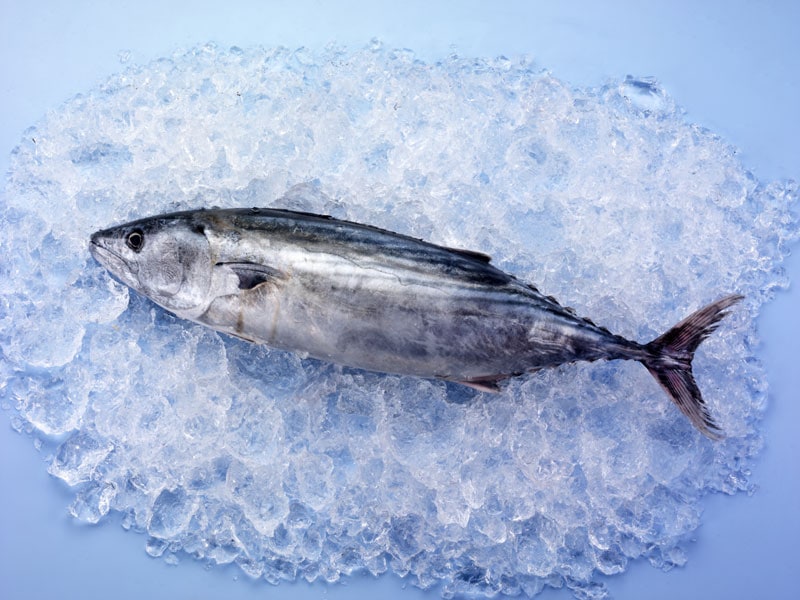
Bigeye Tuna
Bigeye tuna is big and thick, which offers bright and firm meat. It comes with a rich flavor for your taste. This kind of tuna is perfect for those who’re looking for fatty and flavorful fish but their budget is limited.
This tuna may not be the cheapest, but judging by its quality and their price, it seems like a reasonable investment. In recent years, bigeye tuna’s stock has decreased dramatically due to overfishing.
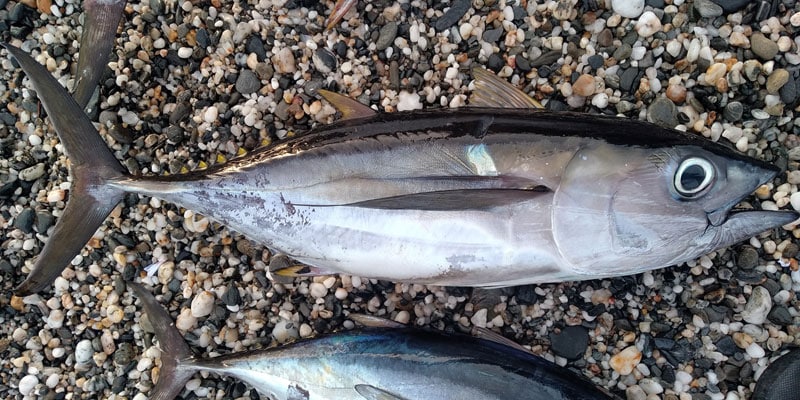
Blackfin Tuna
Blackfin tuna is the smallest species of tuna. They prefer clean water and warm temperatures. Due to its migrating habit, it boasts a robust, firm texture, with low fat content in the meat. The tuna is also sushi grade and offers a relatively strong flavor.
If not preserved properly after catching, the meat will smell and taste really fishier than it should. This type of tuna occasionally appears in sushi or sashimi restaurants.
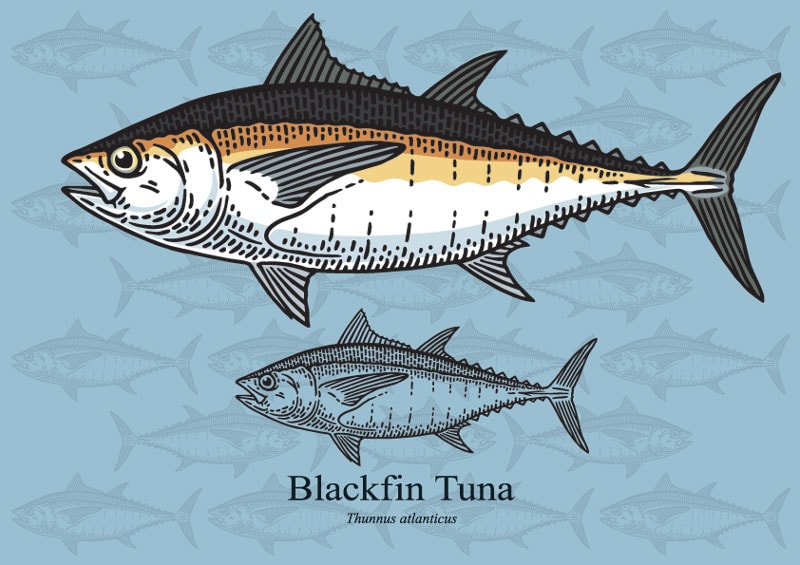
How To Know Your Tuna Is Fresh?
It’s hard to say if your tuna steak is fresh, but it’s easy to tell when it has gone bad. Consuming rotten fish may lead to serious food poisoning, especially when you eat your fish raw. Here are some signs that you can look for:
Overly-Fishy Smell
Bad tuna has a particularly sour smell that is difficult to get rid of. Some kinds of tuna itself come with a strong aroma, but it shouldn’t be unappetizing. Get rid of your tuna if there is an overloaded fishy stench.
Change In Color
Fresh tuna steak comes in colors ranging from bright red to light pink, depending on its fat and lean proportion. If you ever find your raw steak tuna with a suspicious brown shade, it might not be as fresh.
The sign of discoloration of bad tuna also appears around the bone. Black, dark brown, or green colors are abnormal in tuna, signaling that it’s time to discard them.
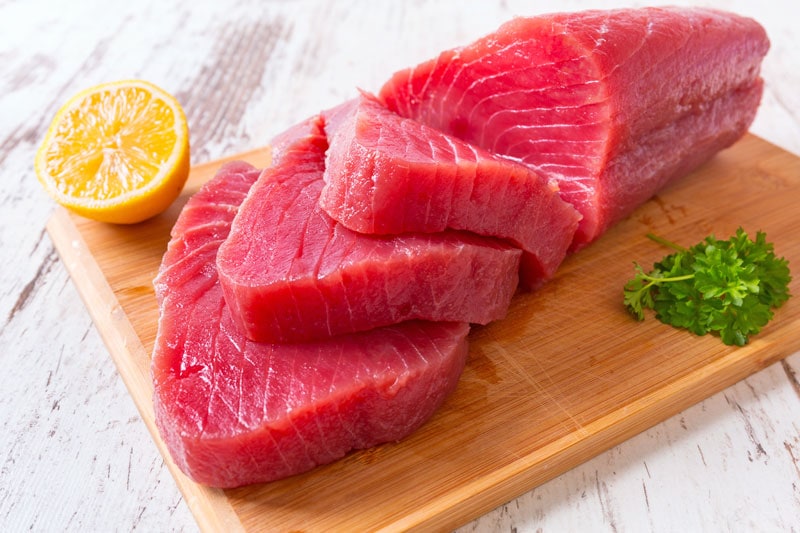
Bad Texture
Bad tuna also develops a green shade and slimy film in the texture that is as unappetizing as it is dangerous to consume. The texture of bad tuna is not as firm as fresh ones.
However, some tuna comes with a softer texture than others, so it’s better to look for more signs.
Best-By Date
In the case of canned tuna, there is a “sell-by” or “best-by” date printed on the label. Although tunes that past these dates may still be safe to eat, there is no guarantee the freshness of your expired tuna remains. It’s best to avoid consuming these products.
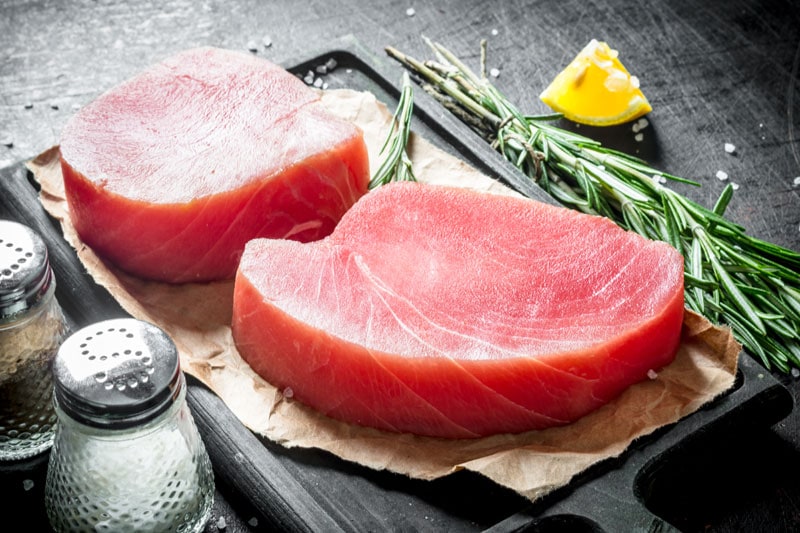
Mouth-Watering Recipes With Tuna You Can’t Skip
If you are not sure what to cook with tuna, this is the guide for you. With tuna, there are endless savior dishes that not only quench your craving but also give tons of benefits to your health.
Tuna Sandwich
Tuna sandwiches are something I can never have enough of. It’s easy, fast to make, and delicious to the last bite. There are hundreds of variations for you to choose from, so you will never grow tired of it.
Tuna Salad
You can never go with a classic like tuna salad. It’s a light and fresh dish that is the best choice if you are looking for a quick and delicate taste. Made with a few simple ingredients, such as canned tuna and vegetables of your choice, this healthy snack is your best choice on a rainy day.
Tuna Burger
Here is another fast and easy canned tuna recipe to escape from those meats with high cholesterol for a while. Tuna burgers will satisfy both adults and kids in your family. Any skepticism about their deliciousness will vanish after the first bite.
Tuna Macaroni Salad
Tuna macaroni salad is also a dish with a little twist on the classic macaroni dish. You can use it as a side dish with BBQ, potluck, or a main dish on its own. The beautiful look of it alone can make your mouth water.
FAQs
You have learned so many things about tuna in the articles. But I still have more knowledge about tuna to offer in this section.
Long Live The Kings Of Fish!
Due to its culinary and health values, tuna deserves the title “The king of fish”. However, for the same reasons, some kinds of tuna have come to the brink of extinction because of their economic value.
You can help save them by only purchasing tuna in the can or package with a little blue label “Fished by pole and line”. This means the fish were caught in small numbers, not by huge fishing nets that can deplete the stock.
If you find this article useful, please share it with your friends who may consider tuna for dinner. Feel free to leave a comment, and don’t forget to like this post for more great content!
References
- Tuna (2022) Wikipedia. Wikimedia Foundation.
- Danahy, A. (2020) Tuna vs. salmon: Is one healthier?, Healthline. Healthline Media.




